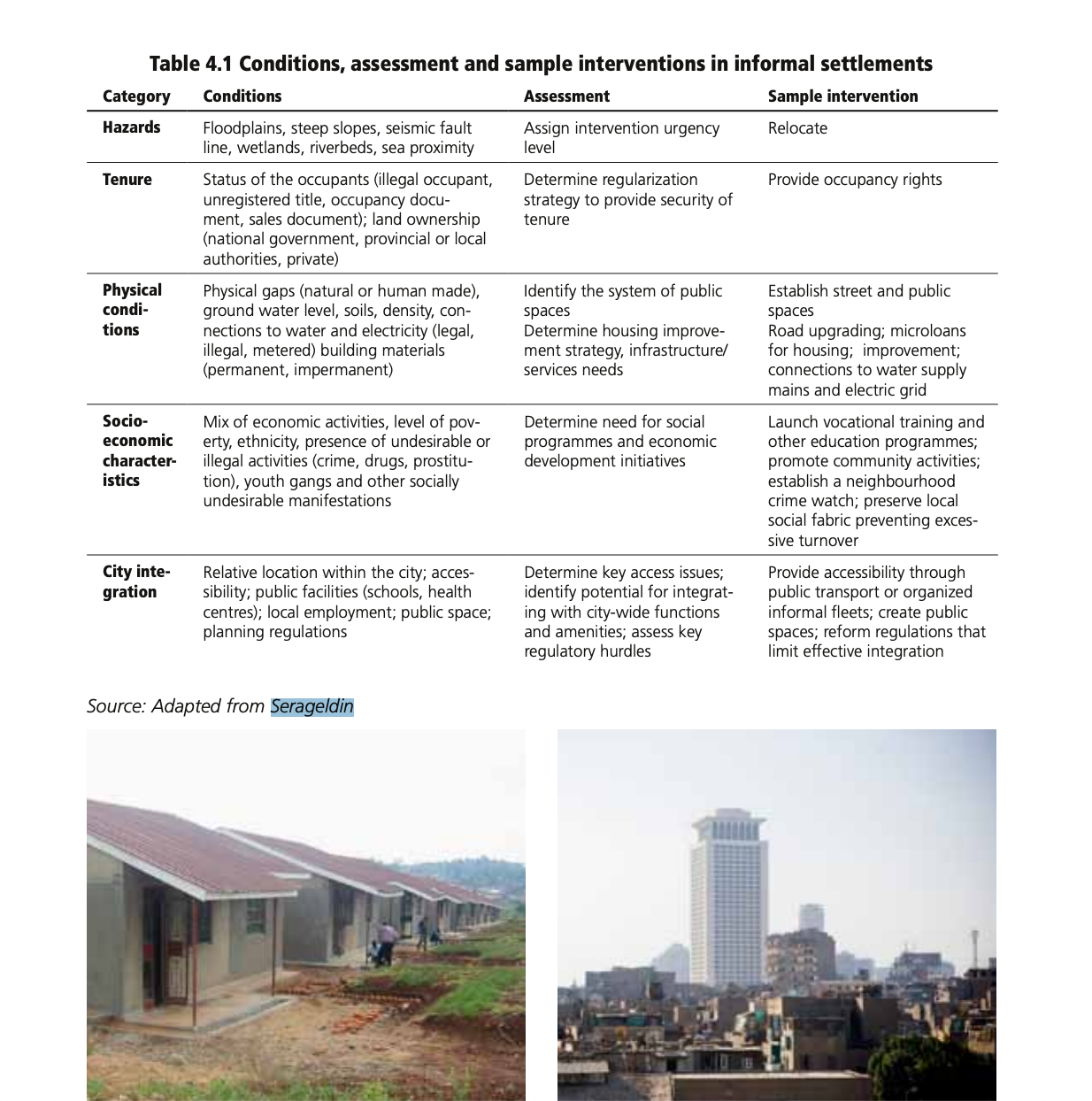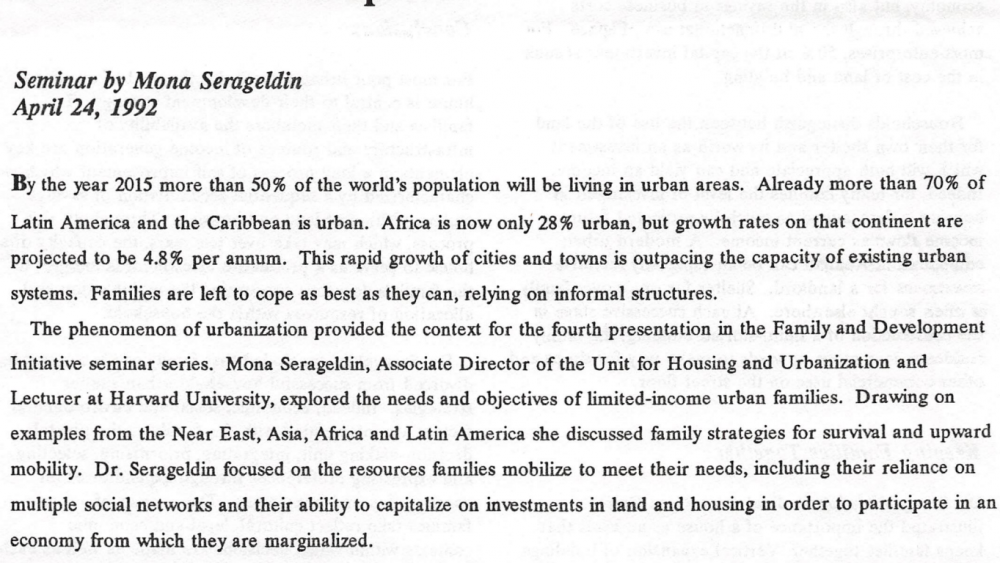[Excerpt: Study Summary, I. Overview, July 1989, p. 2]
“Most urban settlements in lower-income countries, whether they are new settlements built by the government, established informal communities or new squatter areas, are subject to tremendous pressures of population growth and economic and physical change. The greater the pressure for development, the more rapid the transformations brought about by this maturation process. This continuous growth and change can rapidly transform their original physical forms beyond recognition and alter the community’s social and economic functions. The process is further intensified when governments introduce improvements such as water, sewerage, basic services and housing. For example, carefully planned housing projects designed according to standards which assume a segregation of commercial and residential activities will find that, overtime, these activities will occur simultaneously in the same area.
The need of low-income families to generate additional income and living space results in the construction of new rooms and apartments which were often not anticipated in the original design of the site or its infrastructure. In such cities as Karachi, Dhakka and Cairo, where housing shortages are high, additions to structures can reach over six stories in less than five years, raising densities from under 400 to over 1,000 persons per hectare. The most dynamic aspect of transformation within a community affects housing, small scale commercial establishments and the disappearance or overuse of communal open
spaces.”
…..
[Excerpt: Study Summary, III. STUDY DESIGN, July 1989, p. 7]
“The purpose of the Study is to develop practical, affordable design criteria which are responsive to the social and economic dynamics of low-income settlements. It will focus on aspects of housing and community design which have received little attention in the past. Most notably, the long-term impact of rapid growth in low-income urban settlements and the effect of the resulting transformation of housing and environmental conditions on the health of the residents. The definition of this linkage and the development of appropriate environmental design criteria, will allow decision makers to choose physical improvements that will maintain their positive impacts as a community matures.“




